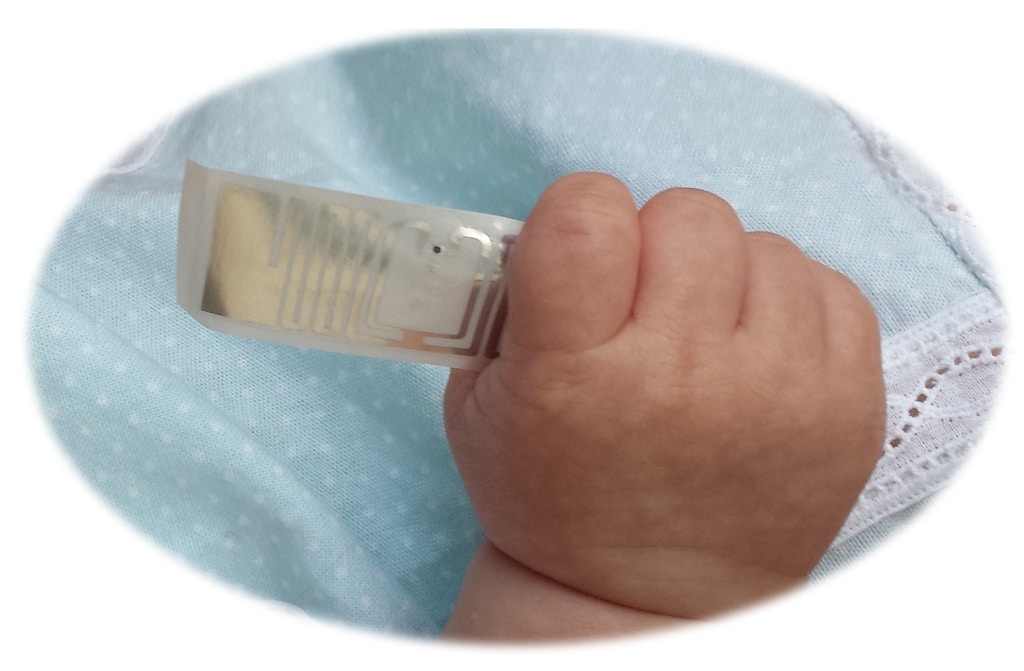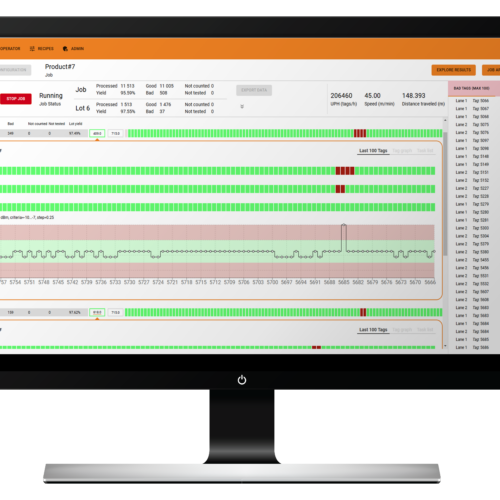Something worried me before my first daughter’s arrival, something I had been already warned: “Babies are born without a handbook”. I am used to working with procedures, methodologies or at least to have some standards to follow; and now I was going to face the most demanding challenge in my life without any kind of guidance.
But, I gradually noticed that it was not going to be that way, and that the parallelism between the technology I have been working with for more than 15 years, RFID ― those intelligent chips enabling the Internet of Things which we can find in more and more stores and warehouses every day ―, was clear from minute zero. Many companies, end users and system integrators think, like I did in early stage, that there are no rules nor guidelines for a project to become successful, but that trial and error is the only way to gain experience to face it with. Is that how I should bring my daughter up, by trial and error?
Look for Help – It Is Available!
As with RFID, when Carlota was born, tranquility came by being surrounded by experts in the field, and not just sympathizers who have faced that same situation. Firstly, I was provided with a handbook. Seriously! Guidelines about what to do in certain situations, such as tips to interpret the baby’s cries. Better than improvising with the newborn, right? Likewise, the handbook suggested the baby to sleep on her back, while just a few years ago it was suggested to sleep on her stomach.
Having professionals, who advise us following the latest recommendations and standards, gives us the peace of mind to do things well in RFID, too.
For example, some years ago it was always recommended to do pilot tests before deploying an RFID project, but then we realized that the results were conditioned by the selected reader and selected tags. Yes, it seems obvious, but before even starting those pilot tests, readers and tags had already been chosen within the wide spectrum of combinations existing in the market. Doesn’t it make sense to first know what we need before choosing them? For this reason, nowadays professional RFID companies use standards (have you heard about the TIPP methodology by GS1?) and laboratory equipment capable of determining which RFID readers and tags in the market will give better results in a real test.

To Do Comparison You Need a Reference
Carlota was weighed, her length was measured, the diameter of her head was measured… these were going to be the indicators that would tell us if her growth was adequate or not. It is not useful to keep trying things; we must measure, measure Carlota and RFID, and do it with the right tools. But not only that! What a surprise when the kilograms and centimetres at the hospital were not the same kilograms and centimetres at the drugstore, not even the same as those at the pediatrician. How should I decide if everything is okay or not when one tool tells me “yes” and another “no”?
And I remembered so many customers I have who do not worry about calibrating their RFID measuring equipment, and a tag that could work with any reader when tested with a given equipment, but the same tag that would only work with the most powerful and sensitive readers when tested with other equipment.
Define Your Requirements Before Selecting the Solution
I have always insisted on my clients that they should not choose the best tag, but the most appropriate tag for their application; with my daughter this situation happens from diapers to milk, but not only with her milk, also with the adults’ milk! What kind of milk do you have in your fridge? The one with more calcium, vitamins, etc. on the market; the cheapest one; or the one you consider good enough for you and your family? The same thing happens with RFID tags, where it makes no sense to pay more for the best tag on the market, because there is no such ideal tag, but the one that is the best one for your application, the best milk for you.
Regarding prices, what should we think of the cheapest ones? Again, if their quality and features are the most convenient for us, they are definitely the best choice. Please pay attention to both concepts: good quality and minimum required features.
And what about the quality? I do not mean good finishes or performance … but that once a model is chosen, every diaper, every tag, always perform the same way; their features do not vary among them and they have a certain margin of operation. It seems obvious, but the cheapest tags on the market are usually cheap because although they all work (i.e. a standard RFID reader can detect them), not all of them perform the same way; some tags can be detected at much longer distance than others, even though being the same model. I checked it when I bought some cheaper diapers than the usual ones, which seemed to absorb as much as the best ones, but it was not always like that, whether it was a discreet pee or a champion one.
“Always” is an interesting and challenging concept, but at least we need to be prepared before the chosen diaper stops performing as expected and what would be acceptable. What if a customer makes the wrong choice and purchases 5 million reusable tags regardless of their operating margin? They could perform well today, and at the slightest change in the initial conditions of use, stop doing so.
Select Suppliers That You Can Trust
Finally, once the feeding bottles, diapers, milk were chosen, and their brands, prices and features were evaluated, we had to decide where to buy such an amount of supplies. I have to admit that we started buying some stuff online and taking advantage of promotions at the hypermarket, but it all depends on how seriously we want to get involved in bringing our daughter up. Right now, there are many things we decided to buy in pharmacies and specialized stores, not only for the qualified professionals who helped us from the beginning, but also for the access they have given us to brand events, training, samples of new products…
In the end, we are learning day by day. Carlota relies on us, and we rely on professionals and industry standards, because there is a reference for every industry. If in children’s upbringing references are driven by the WHO, which are followed by pediatricians; in RFID industry the guidelines are given by ISO, GS1 and RAIN RFID Alliance, and there are more and more system integrators and end users who, by following them, have stopped suffering with the deployment and adoption, respectively, of the technology. Why should we suffer as the result of improvising with our newborn instead of enjoying her growth without worries?
Welcome, Carlota.
RFID, it’s your time.



